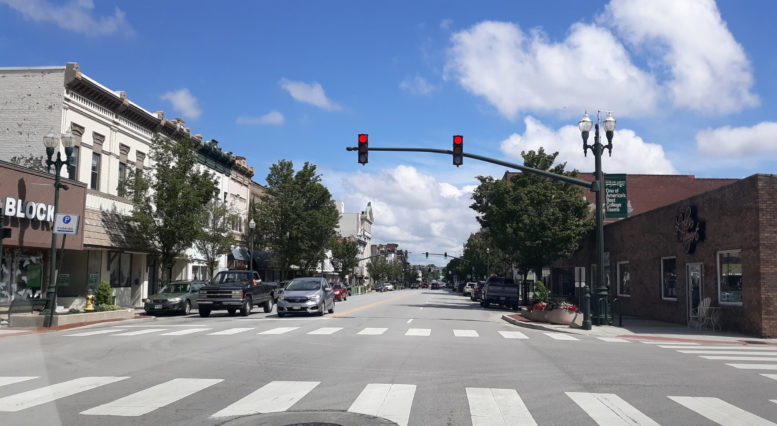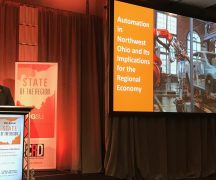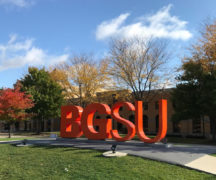By JAN LARSON McLAUGHLIN
BG Independent News
Bowling Green has been selected for a program helping smaller communities compete with big cities to attract and retain people. The goal is to create “placemaking” opportunities – to strengthen the connection between people and the places they share.
The Center for Regional Development at Bowling Green State University has announced three communities – BG, Mansfield and Paulding – will benefit from its Reimagining Rural Regions program.
Launched in 2021, the R3 program is an economic and workforce development-centered placemaking initiative that helps communities identify, enhance and build community assets to aid in talent attraction and retention.
In Bowling Green’s case, that means working on Mayor Mike Aspacher’s Heritage 2025 project for the downtown.
“A vibrant downtown is important to our citizens, businesses and to our community identity,” Aspacher said during his State of the City Address earlier this year. “ A strong downtown does not diminish our other Bowling Green businesses, it provides strength and stability throughout the community.”
The Heritage 2025 project will involve ideas like public art, alleyway enhancements, green areas, and greater use of the public right-of-way to accommodate modern amenities such as parklets.
“These ideas, and others, are worth exploring, prioritizing and potentially implementing,” Aspacher said. “A strong downtown is a hallmark of a strong community.”
The mayor said he plans to appoint a committee to study the possibilities for the downtown.
The citizen-led committee will consider topics such as:
- Improving aesthetics such as murals and public art along with attractive and comfortable outside environments.
- Improving public spaces including consideration of increasing sidewalk widths and enhancing alleys.
- Promoting upgrades such as façade improvements.
- Considering best uses of the right-of-way areas in and around downtown.
- Analyzing parking options that could be considered in tandem with new mixed-use development.
- Promoting and encouraging investment within the downtown.
Aspacher said he was pleased that the Heritage 2025 project was selected as part of the rural region initiative.
“I’m very excited. I think it’s a great opportunity to build on the town-gown relationship,” he said. “That will bring a good number of additional resources to the project.”
The program will also allow for greater interaction with BGSU students and the rest of the community, the mayor said.
BGSU graduate and undergraduate students will work with the community to help plan and implement projects aimed toward enhancing and building more livable spaces.
“The economic, cultural and technological divide between larger cities and communities and rural small towns has never been greater,” said Russell Mills, senior director for the BGSU Center for Regional Development. “Through this initiative, we are able to work closely with communities to identify placemaking opportunities that will impact workforce attraction and retention in our region and state.”
After a competitive application process and site visits, the CRD at BGSU selected two other communities for the second cohort of the R3 program:
- The Village of Paulding will use R3 resources to leverage its historic county courthouse and picturesque village square into a hub for community activity through the development and attraction of new restaurants, retail shops and community hubs.
- The City of Mansfield will use the capacity provided through the R3 Program to continue its Mansfield Rising initiative by reimagining a parking lot in the heart of downtown into a community asset and gathering place.
The CRD at BGSU continues to work with its first cohort of communities selected for the R3 program: Village of Gibsonburg, the City of Van Wert and the City of Marysville.
“We are so pleased to engage the City of Bowling Green, the City of Mansfield and the Village of Paulding – these communities create so much good in our region and in Ohio,” said BGSU President Rodney K. Rogers. “As a public university for the public good, BGSU is committed to supporting the current and future growth and vitality of our rural communities that power our state. Our R3 initiative is another example of how together, we can make our region stronger and position Ohio for future success.”
The R3 Program is funded by the U.S. Economic Development Administration and the USDA Rural Development Rural Placemaking Innovation Challenge.




